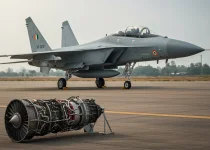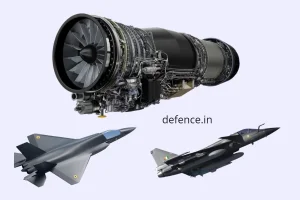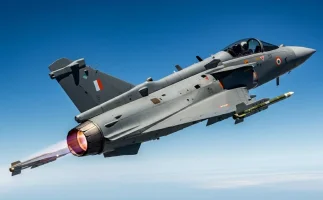- Views: 3K
- Replies: 18
As India progresses with its Advanced Medium Combat Aircraft (AMCA) program, designed to deliver a home-grown fifth-generation stealth fighter, strategic analyses suggest a need for a more powerful evolution: a sixth-generation fighter-bomber significantly larger than currently planned.
This proposed shift advocates for an aircraft with a Maximum Take-Off Weight (MTOW) nearing 50 tonnes, specifically tailored to counter potential threats from heavily fortified Chinese airbases situated on the high-altitude Tibetan Plateau.
The core argument centres on the unique challenges posed by the People's Liberation Army Air Force (PLAAF) installations in Tibet. Airbases such as Hotan, Ngari Gunsa, and Lhasa Gonggar are located at extreme altitudes (often above 4,000 meters) and are positioned roughly 1,500 to 3,000 kilometres from India's northern borders.
Recent years have seen China significantly upgrade these facilities, deploying advanced fighter jets like the J-20 and J-16, H-6K bombers, sophisticated radar systems, and formidable surface-to-air missile (SAM) systems, including the HQ-9 and potentially the S-400.
These developments create a robust air defence network, necessitating a future Indian aircraft capable of penetrating deep into contested airspace to neutralise high-value targets, thereby disrupting China's air power projection capabilities near the Line of Actual Control (LAC).
The current vision for AMCA, particularly the initial Mk1 version, aims for a 25-tonne class multirole fighter, with the later Mk2 possibly reaching around 30 tonnes. However, proponents of the larger design argue that effective deep strike missions against hardened Tibetan targets demand capabilities beyond this scope.
Why the Need for a Heavier Fighter-Bomber?
Several key factors drive the call for a 50-tonne class aircraft:- Enhanced Weapons Capacity: Deep penetration strikes require substantial ordnance to destroy reinforced targets like underground bunkers, runways, and command centres. A 50-tonne airframe could potentially carry a weapons payload of 10-15 tonnes, significantly more than the projected 6-8 tonnes for the current AMCA concept. This would allow for carrying a mix of precision munitions, runway-destroying weapons like the indigenous DRDO Smart Anti-Airfield Weapon (SAAW), and long-range missiles such as the Nirbhay or future hypersonic variants. This payload capacity would be comparable to dedicated strike aircraft, but combined with next-generation stealth.
- Increased Range and Endurance: The vast distances to Tibetan airbases and the performance penalties imposed by high-altitude operations (thinner air reduces engine efficiency and lift) necessitate exceptional range. A heavier aircraft allows for larger internal fuel tanks, potentially enabling a combat radius of 1,500-2,000 kilometres without relying on vulnerable aerial refuelling tankers close to conflict zones. Powerful twin engines, possibly in the 110kN thrust class each (potentially derived from indigenous efforts like the Kaveri or through international collaboration), would be essential.
- Improved Survivability: Facing advanced air defences requires cutting-edge survivability features. A sixth-generation platform would incorporate stealth characteristics superior to current fifth-generation fighters, integrated electronic warfare (EW) systems to jam enemy sensors, and potentially directed energy weapons. A larger airframe can better accommodate these complex systems and allow for structural reinforcements or armour needed for potential low-altitude flight profiles using terrain masking over Tibet's rugged landscape.
- Versatility: While optimised for deep strikes, a large sixth-generation aircraft could retain significant air-to-air capabilities, acting as an air superiority fighter when needed. It could also serve as a command node in network-centric operations, potentially controlling unmanned 'loyal wingman' drones, aligning with global trends in future air combat seen in programs like the US Next Generation Air Dominance (NGAD) and the European Future Combat Air System (FCAS).
Ensuring the destruction of hardened or mobile targets may still require aircraft to get closer, balancing the advantages of standoff range against the need for guaranteed target destruction, which a penetrating fighter-bomber platform could provide.
Developing a 50-tonne, sixth-generation fighter-bomber represents a significant technological and financial leap. It would require substantial investment in engine technology, advanced materials, stealth, sensors, and weapons integration.
However, proponents argue that such an aircraft is necessary to provide India with a credible deterrent and offensive capability against the specific geographical and military challenges presented by the PLAAF's posture in Tibet, ensuring the nation's future air dominance and strategic autonomy in a complex geopolitical landscape.



